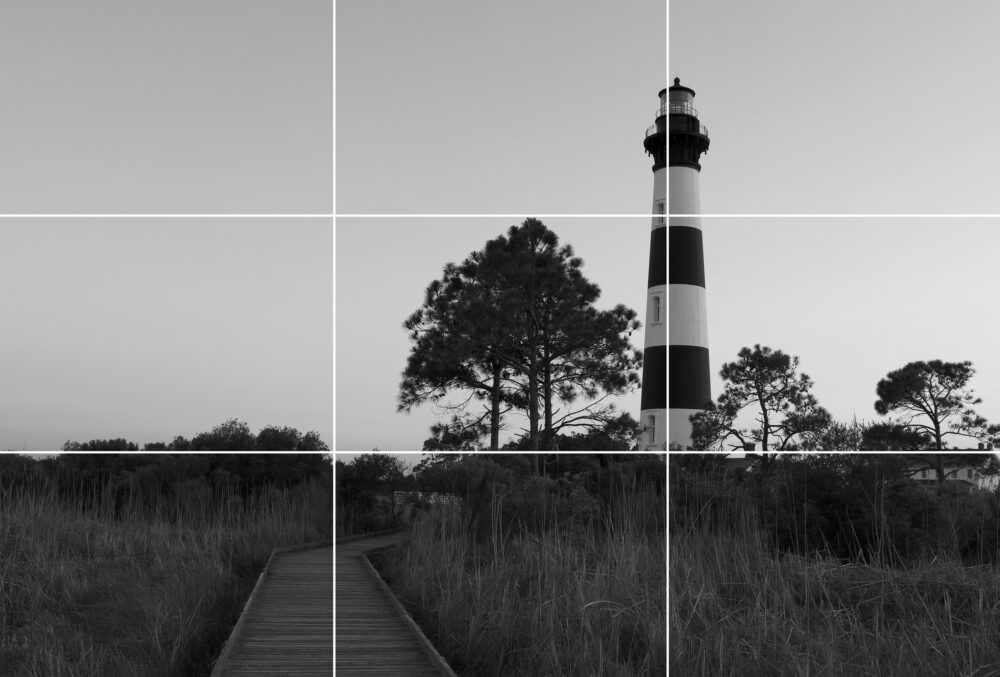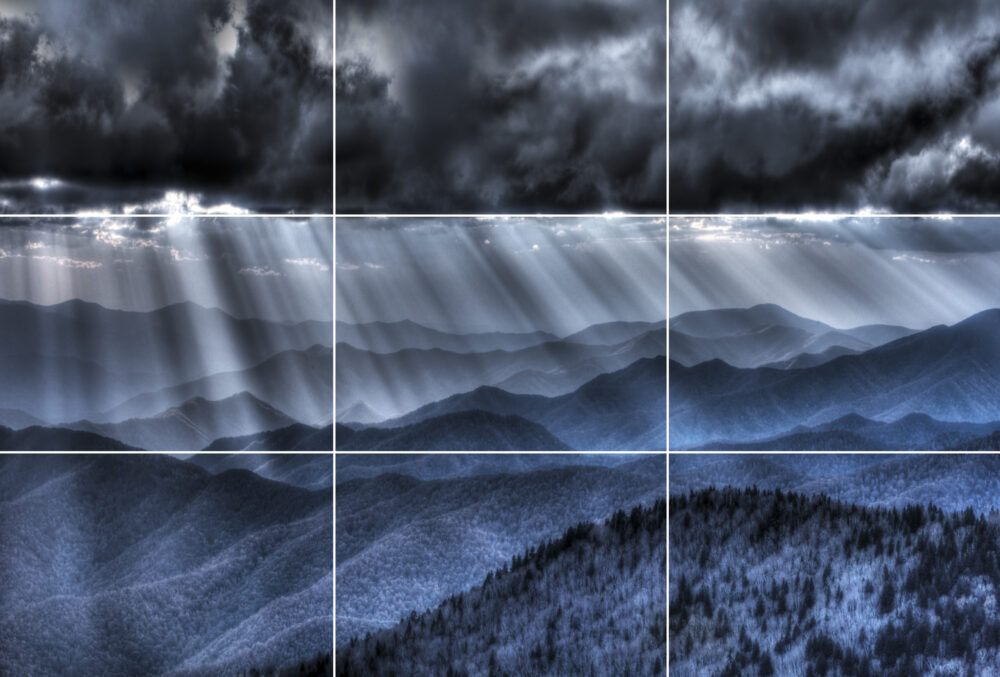What makes a photo truly captivating? Often, it’s the composition. Composition turns an okay snapshot into art. The rule of thirds can help do this. It is a basic guide that will help you create great images.
Understanding the Rule of Thirds
Good photos grab your attention. The rule of thirds is a simple method to help compostion. It guides you to arrange elements in a frame. It can turn flat pictures into dynamic views.
What is the Rule of Thirds?
Think of your camera screen. Now picture two lines. One pair runs across. The other runs up and down. This makes nine boxes. The rule says to put key parts of your image where lines cross – known as the power points. It also works by placing elements along the lines. This helps make a balanced, more pleasing picture.

The Grid: Visualizing the Rule
Most cameras have a grid option. Turn this on in your settings. Look through the viewfinder or on the LCD screen. You’ll see the grid lines. This helps you line up shots as you take them. Some photographers learn to picture the grid. They can then use it in their mind while shooting.
Why Does It Work?
The rule of thirds isn’t random. It ties into how our brains see things. Our eyes often go to points where lines cross. Placing things there makes them stand out. It makes the image feel more balanced. It creates a natural flow. This draws the eye through the photo and hence makes the image more appealing.
Applying the Rule of Thirds to Landscapes
Landscapes need a strong composition. It shows scale. It directs attention. Use the rule to do this well. You’ll see instant change in your photography.
Horizon Placement
The horizon is a vital part of a landscape. Think about where you put it. Don’t always put it in the middle. Place it on the top line to show more land. Place it on the bottom line to show more sky. Think about what you want to emphasize. Use existing lines in nature to run along the grid lines.

Positioning Key Elements
Landscapes have focal points. These are trees, rocks, and buildings. Use the rule of thirds for them. Put them at the grid’s intersections. This draws the eye to those parts. It makes a strong, focused picture.
Creating Balance and Visual Flow
A good photo draws your eye around the image. The rule of thirds assists in that. Put something interesting in one part. Add something smaller in another. This creates balance. It takes the viewer on a journey through the scene.
Beyond the Basics: Breaking the Rule
Rules are guides, not laws. Sometimes, breaking them works. Know when it is okay to move away from the rule of thirds. The rule is all about balance and creating a sense of harmony, but sometimes you may want to create an abstract or different feel to an image. If you’re aiming to create tension or a minimalist feel, it’s ok to step away from the rule and try something different instead. It could lead to very powerful pictures.
When to Ignore the Rule of Thirds
Symmetry looks great centered. Leading lines pull you into the middle. Strong subjects work best in the center. These times call for breaking the rule. Trust your eye. Experiment.
Finding the Right Balance
Look at the scene. Does the rule of thirds feel right? Or does centering feel stronger? Think about what you want to say. Your feelings matter as you take the shot. Composition is one way to get your point across. In today’s digital age shoot a variety of images and review them later at home.
Practical Tips and Examples
See the rule of thirds in action. Try these tips to master it. Use it to enhance the landscape photos you take. See the difference it can make!
Using the Rule of Thirds in Post-Processing
You can fix composition later. Crop your photo using the grid. Move key parts to the lines. You can change the feel of a photo this way. Even a slight crop can create a different picture.
Other Important Ingredients
The Rule of Thirds is but one small part of the photo taking process. Consider leading lines, drama in your composition, sharpness, shutter speed, the reciporocal rule, aperture and ISO as contributing factors as you make that perfect image.
Conclusion
The rule of thirds is key to landscape photos. It is a simple method that leads to powerful pictures. Use it as a starting point. Experiment with it. Develop your own style. Your photos will be better for it.
A Selection Of Guide Articles
How To Photograph Winter Landscapes
How to photograph winter landscapes, gear, what you need to consider and understanding the how snow affects light
Planning A Photography Roadtrip
A guide to planning a photography roadtrip. How to find locations, what to pack and tips to get the most from your trip
Create Dramatic Landscape Photos
Luck, light, skill and perseverance are just some of the facets needed to create dramatic landscape photos
Landscape Photography: Portrait vs. Landscape Orientation
Comparing composition techniques and when to use landscape versus portrait orientation
Autumn Landscape Photography
Autumn Landscape Photography - what you need and how to plan for and perfectly time your fall landscape adventures
Guide To Photographing Sunrises and Sunsets
A little pre-planning can make photographing sunrises and sunsets much more successful
Landscape Photography with the Reciprocal Rule
The reciprocal rule is the starting point to ensure the images you take are sharp and crisp
Guide To Understanding Metering Modes
Learn about how your camera measure light and the various metering modes plus when to use them to get the best exposure in your photos

